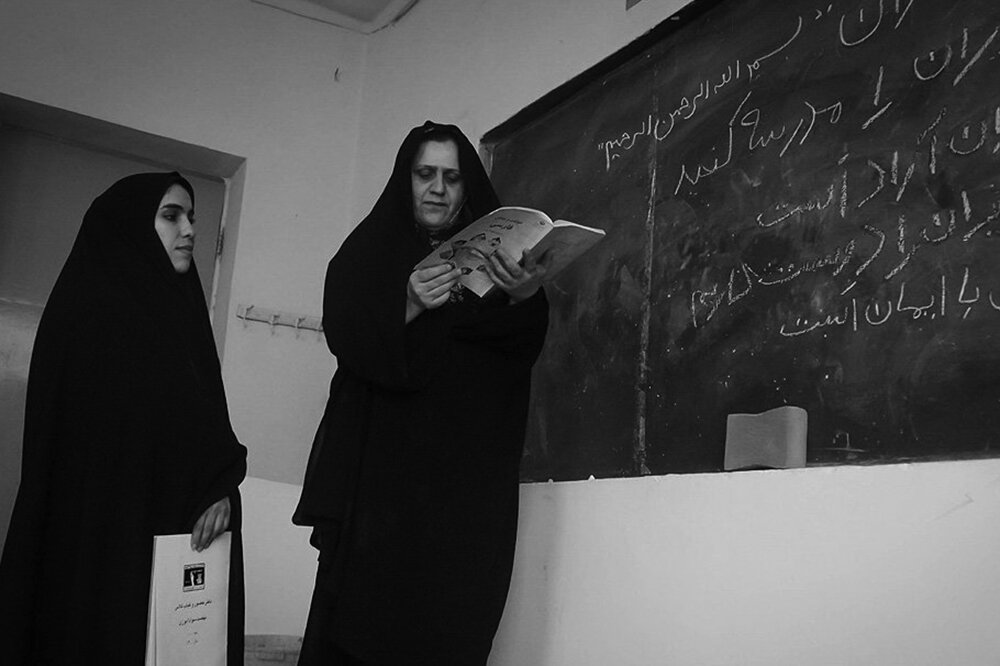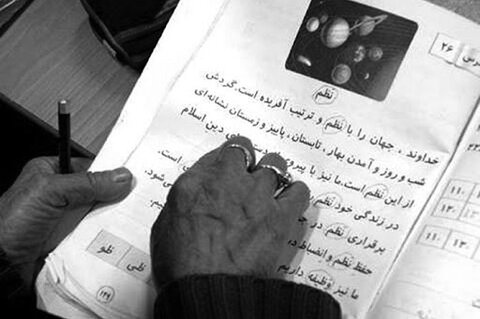Iran (IMNA) - Recognizing the importance of education as a fundamental right, the Iranian government has implemented several measures to address illiteracy at its core. A comprehensive literacy program has been introduced, targeting both children and adults who are unable to read or write. Special emphasis is being placed on reaching out to marginalized communities and rural areas, where illiteracy rates tend to be higher.
To make education more accessible, Iran has increased the number of schools and educational facilities across the country. Additionally, the government is investing in the training and recruitment of qualified teachers to provide quality education to all. Efforts are also being made to develop innovative teaching methods and materials that cater to the diverse learning needs of the population.
Furthermore, Iran is leveraging technology to bridge the literacy gap. Initiatives such as mobile learning apps and online platforms are being implemented to reach individuals who may not have easy access to traditional educational resources. These digital tools are designed to provide interactive and engaging learning experiences, making education more enjoyable and effective.
The eradication of illiteracy in Iran is not just a government-led initiative; it is a collective effort involving various stakeholders, including community leaders, civil society organizations, and volunteers. Public awareness campaigns are being conducted to emphasize the importance of education and encourage individuals to take advantage of the available opportunities.
The impact of these efforts is already evident, with significant progress being made in reducing illiteracy rates. As more individuals gain access to education, they are equipped with the skills and knowledge necessary to improve their lives and contribute to the overall development of the nation.
Eradicating illiteracy is a long-term goal, but Iran's commitment and determination to address this issue head-on are commendable. By investing in education and empowering its citizens, Iran is paving the way for a brighter future where every individual has the chance to thrive and succeed.
Following the establishment of Iran’s Literacy Movement Organization in 1986, approximately 11 million individuals became literate, resulting in a rise in the country's literacy rate from 47.5 percent to approximately 61.8 percent. Additionally, the Literacy Movement reaches out to 400,000 illiterate individuals each year, half of whom possess functional illiteracy.
Presently, the number of illiterate people stands at less than one million. Currently, only five out of every 100 Iranians lack literacy skills, as stated by Shapour Mohammadzadeh, the head of the Literacy Movement Organization.
As per the latest census, the literacy rate is 96.2 percent, with an annual increase of 0.5 percent. The distribution of illiteracy across provinces is significant, with some provinces having one illiterate individual per 20 square kilometers. Mohammadzadeh expressed optimism in soon celebrating the eradication of illiteracy in provinces where the literacy rate reaches 98 percent. Presently, 50 percent of the Literacy Movement Organization's efforts are focused on consolidating and transferring literacy knowledge to prevent any regression.
Referring to the gender disparity in literacy rates, he noted that census results from 1976 to 2016 indicate a decrease in the gender gap from 23.4 to 6.8 percent, reaching less than 6.1 percent in 2020.
By dedicating approximately 80 percent of literacy initiatives towards girls and women, particularly in rural areas, the literacy index among women has shown significant growth. Mohammadzadeh added that the literacy rate for women in the age group of 10 to 49 years has risen from 26.2 percent before the revolution to 90 percent at present.
According to his statement, by prioritizing literacy programs for girls and women, particularly in rural regions, the literacy rate among women has significantly improved. He further mentioned that prior to the revolution, only 26.2 percent of women aged 10 to 49 were literate, but now it has reached 90 percent. Additionally, he highlighted that the movement has provided literacy education to a total of 830,000 foreign nationals, with 332,000 currently benefiting from these programs.
with strategic planning, public awareness campaigns, and effective implementation of educational policies, Iran made an endeavor to eradicate illiteracy in Iran. There are some key steps that can be taken to address this issue.

Enhancing Access to Education
One of the fundamental steps towards eradicating illiteracy is ensuring access to quality education for all Iranians. This involves providing adequate infrastructure, such as schools and educational facilities, especially in rural areas where illiteracy rates tend to be higher. Additionally, initiatives should be taken to eliminate financial barriers that prevent children and adults alike from pursuing education.
Implementing Compulsory Education Laws
Enforcing compulsory education laws can have a profound impact on reducing illiteracy rates. By making education mandatory for children up to a certain age, the government can ensure that every child has the opportunity to learn basic literacy skills. Strict monitoring and penalties for non-compliance can further reinforce the importance of education in society.
Promoting Adult Literacy Programs
To address the existing illiteracy among adults, targeted adult literacy programs should be established. These programs can provide flexible learning opportunities for individuals who were unable to receive education during their childhood. By tailoring these programs to the specific needs and schedules of adults, it becomes more feasible for them to acquire basic literacy skills.
Embracing Technological Solutions
Incorporating technology into educational practices can significantly contribute to eradicating illiteracy. Online platforms, mobile applications, and e-learning tools can provide accessible and cost-effective ways of delivering educational content. By leveraging technology, individuals in remote areas can access educational resources and benefit from interactive learning experiences.
Fostering Community Engagement and Awareness
Engaging communities and raising awareness about the importance of literacy is crucial in combating illiteracy. Social campaigns, workshops, and community-based initiatives can help create a supportive environment that encourages individuals to pursue education. Involving local leaders, religious institutions, and NGOs can further enhance the effectiveness of these efforts.
Empowering Women through Education
Empowering women through education is a vital step in eradicating illiteracy in Iran. Gender disparity in education remains a challenge, especially in rural areas. By providing equal opportunities for girls and women to receive education, society as a whole can benefit from their knowledge and skills. Moreover, educated women play a pivotal role in breaking the cycle of illiteracy by nurturing future generations.
Eradicating illiteracy requires a comprehensive and multi-faceted approach. By focusing on enhancing access to education, implementing compulsory education laws, promoting adult literacy programs, embracing technology, fostering community engagement, and empowering women, Iran can make significant strides toward eliminating illiteracy. It is through collective efforts, commitment, and investment in education that the nation can create a more prosperous and inclusive future for all its citizens.


Your Comment